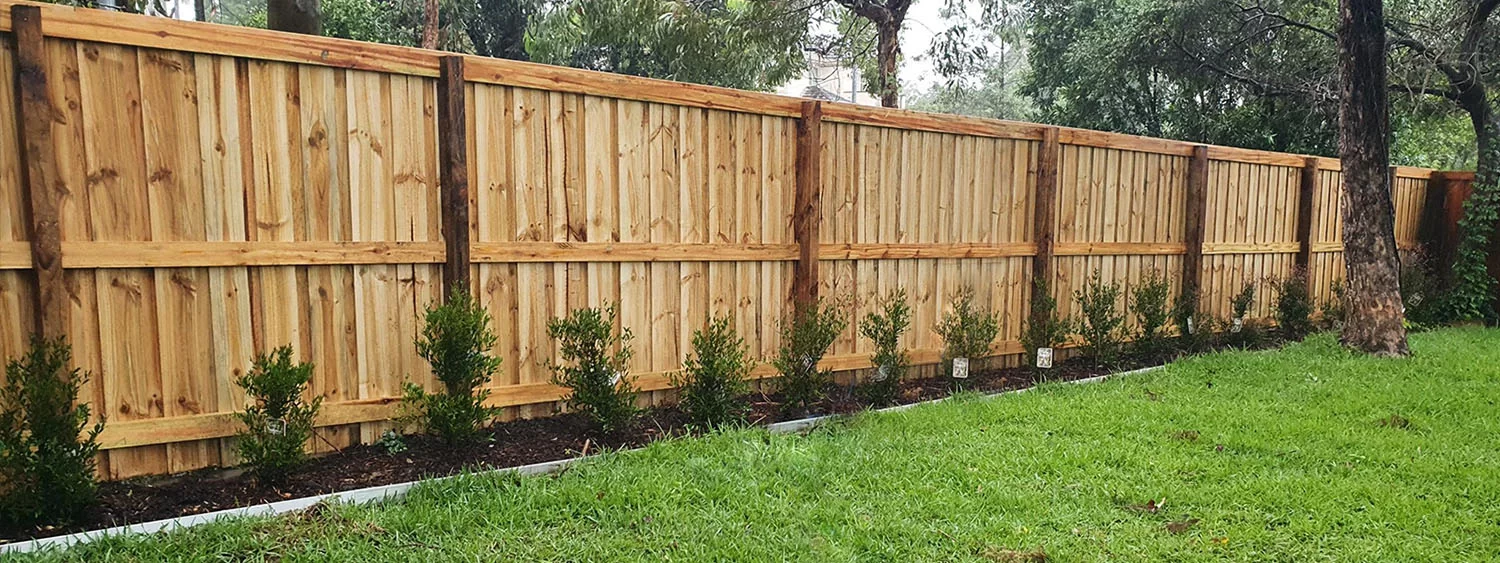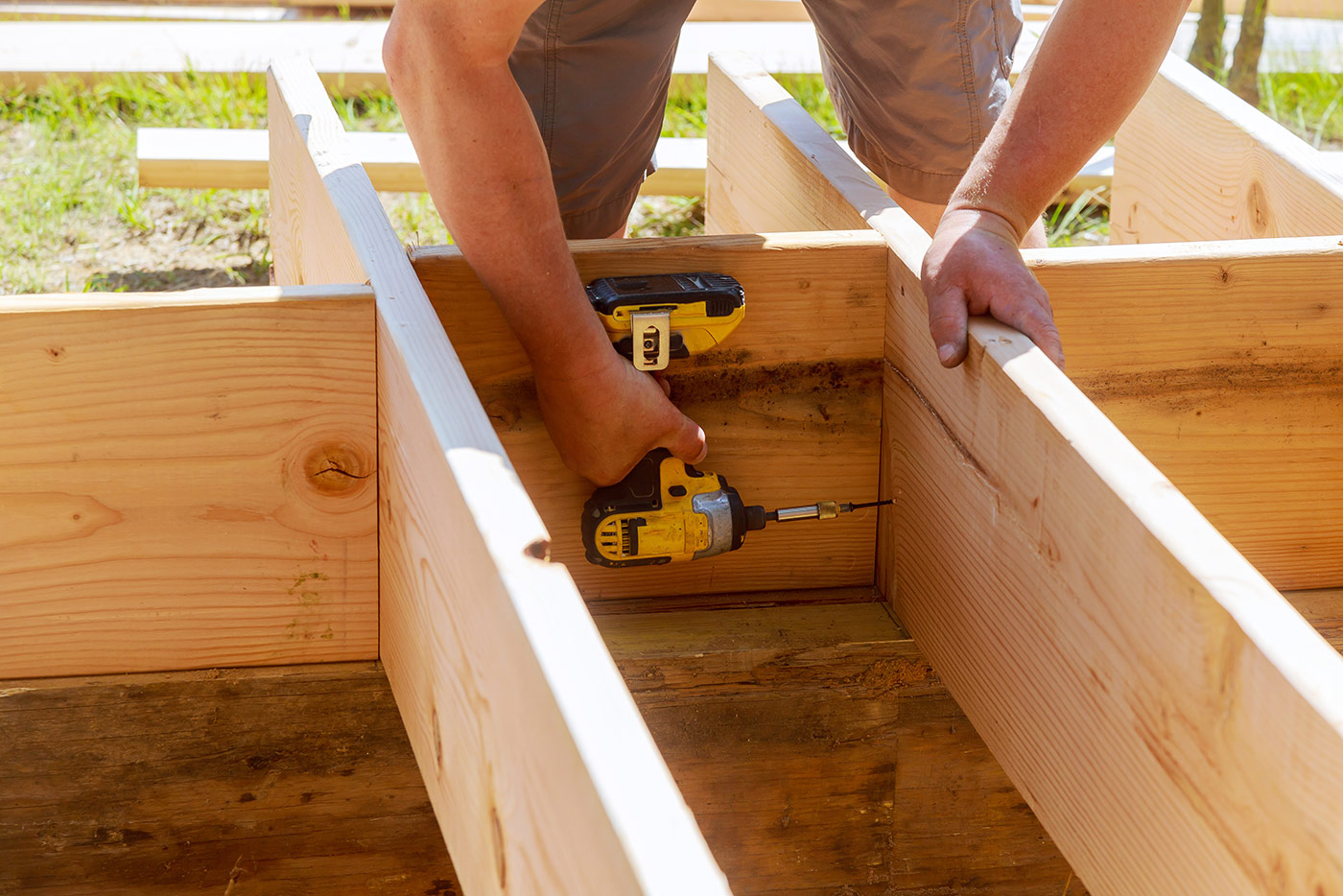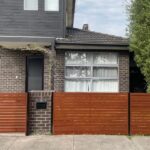
When faced with an old timber fence, homeowners often find themselves at a crossroads: should they repair the existing fence or invest in a new one? A timber fence that has seen better days can detract from the overall appearance of a property and diminish its curb appeal. However, making the right decision requires careful consideration of various factors, such as the fence’s condition, cost implications, long-term goals, maintenance requirements, aesthetic considerations, and functional needs.
In this article, we will explore these factors to help you navigate the decision-making process and determine whether repairing or replacing your old timber fence is the best course of action for your specific situation. By weighing the pros and cons, you can make an informed choice that enhances both the visual appeal and functionality of your outdoor space.
Assessing the Condition of Your Timber Fence
1. Visual Inspection
Start by performing a thorough visual inspection of your timber fence. Look for the following signs of damage:
- Rot and Decay: Check for soft, spongy wood, which indicates rot. Rot usually starts at the base of the posts or where the wood meets the ground.
- Termite Damage: Look for holes, tunnels, or sawdust around the base of the fence. Termites can cause significant structural damage.
- Splitting and Cracking: Inspect the boards for cracks or splits. These can weaken the fence and affect its functionality.
- Loose or Missing Fasteners: Check if nails, screws, or other fasteners are missing or loose. This can impact the structural integrity of the fence.
- Warping and Bending: Examine the fence for warped or bent boards, which may indicate internal damage or improper installation.
2. Structural Integrity
Test the stability of the fence by applying pressure to various parts. Check the following:
- Posts: Push or pull on the fence posts. They should be firmly anchored. If they wobble or move, it may indicate that the posts are rotting or the concrete footing is failing.
- Rails: Inspect the horizontal rails for signs of sagging or detachment. Rails should be straight and securely attached to the posts.
- Panels/Boards: Evaluate how well the panels or boards are attached to the rails. Loose or detached panels might need repairs or replacements.
3. Age of the Fence
Consider the age of your fence. Timber fences typically last between 10 to 15 years, depending on the type of wood, the quality of installation, and local weather conditions. If your fence is approaching or exceeding this age, replacement might be a more viable option than repair.
When to Choose to Repair or Replace an Old Timber Fence

Choosing between repairing and replacing an old timber fence depends on the extent of damage, the fence’s overall condition, and your long-term goals. Here’s a guide to help you decide when to repair versus when to replace your old timber fence:
When to Choose to Repair an Old Timber Fence
- Minor Damage:
- Example: A few broken or cracked boards.
- Approach: Replace or fix only the damaged sections.
- Localized Rot:
- Example: Rot at the base of a few posts or some boards.
- Approach: Replace the affected timber and treat any remaining parts to prevent further decay.
- Stable Structure with Issues:
- Example: Leaning posts or sagging boards.
- Approach: Reinforce or adjust the structure to restore stability.
- Aesthetic Improvements:
- Example: Worn or faded appearance but structurally sound.
- Approach: Sand, paint, or stain to improve appearance.
- Budget Constraints:
- Example: Limited funds for a full replacement.
- Approach: Repair specific issues to extend the life of the fence.
- Temporary Solution:
- Example: Planning a replacement soon but needing immediate repairs.
- Approach: Perform temporary fixes to maintain security or privacy.
- Functional Repairs:
- Example: Gates that don’t close properly.
- Approach: Repair functional elements to ensure proper operation.
When to Choose to Replace an Old Timber Fence
- Extensive Damage:
- Example: Widespread rot or decay throughout the fence.
- Approach: Replace the entire fence to ensure structural integrity.
- Severe Structural Issues:
- Example: Multiple leaning posts or significant sagging.
- Approach: A new fence might be more practical than repairing extensive structural problems.
- Advanced Pest Damage:
- Example: Extensive termite damage or infestation.
- Approach: Replace the affected timber or the entire fence if damage is widespread.
- Old Age:
- Example: A fence that is over 20 years old and deteriorating.
- Approach:Considering the age of the wood is also important. Different old wood fence types have varying lifespans:
– Spruce: 4 to 7 years
– Pine: 5 to 12 years
– Cedar: 15 to 30 years
– Treated lumber: 20+ yearsIf your old wood fence is approaching or has exceeded its expected lifespan, it becomes more cost-effective to replace it rather than continually repairing it. By replacing an old fence, you can ensure a longer-lasting, more durable solution that will require less maintenance and provide better value in the long run.
- High Maintenance Costs:
- Example: Frequent repairs and maintenance.
- Approach: A new fence could be more economical in the long run.
- Upgraded Needs:
- Example: Needing better security, privacy, or a different design.
- Approach: A new fence can meet updated needs and preferences.
- Safety Concerns:
- Example: A fence with sharp edges, instability, or other safety hazards.
- Approach: Replace it to eliminate potential risks and ensure safety.
Combining Repair and Replacement
In some cases, a combination of repair and replacement might be the best solution:
- Partial Replacement: Replace severely damaged sections while repairing minor issues.
- Phased Approach: Repair the fence temporarily while planning for a full replacement in the future.
Final Considerations
- Inspect Thoroughly: Assess the entire fence to understand the full extent of the damage.
- Consult Professionals: Get advice from a fencing professional to make an informed decision.
By evaluating the specific conditions and needs of your timber fence, you can make a well-informed choice between repairing, replacing, or a combination of both.
Repair vs. Replace: Pros and Cons

Repair
Pros:
- Cost-Effective: Repairing is generally less expensive than replacing the entire fence. It involves fixing only the damaged parts, which can save you money if the damage is localized.
- Less Disruption: Repairing a fence is often less disruptive than replacing it. It usually involves fewer changes to your property and may be completed more quickly.
- Preservation of Original Character: If your fence has historical or sentimental value, repairing it allows you to retain its original character and charm.
Cons:
- Temporary Solution: Repairs may only address symptoms rather than underlying issues. For example, repairing a rotting post without addressing soil moisture could lead to further damage.
- Limited Lifespan: If the fence is already near the end of its lifespan, repairs might only extend its usability for a short period. You could end up needing to replace it soon anyway.
- Inconsistent Aesthetics: Repairs can sometimes result in mismatched sections or visible patches that affect the overall appearance of the fence.
Replace
Pros:
- Long-Term Solution: Replacing the fence provides a fresh start, ensuring you won’t need to deal with ongoing repairs. New materials and construction methods can improve durability.
- Enhanced Features: A new fence allows you to choose updated designs, materials, and features that enhance the functionality and appearance of your property.
- Increased Property Value: A well-maintained, new fence can increase the value of your property, making it more appealing to potential buyers.
Cons:
- Higher Cost: Replacing a fence is a more significant investment than repairing. The cost includes removing the old fence, purchasing new materials, and installation.
- Disruption: The process of removing and replacing a fence can be disruptive to your yard and landscaping. It may require additional time and effort to restore your property to its previous state.
- Permits and Regulations: Depending on your location, replacing a fence might require permits or adherence to local regulations, which can add complexity to the project.
Making the Decision: Factors to Consider
1. Budget
Evaluate your budget for the project. If you have limited funds, repairing the fence might be the more feasible option. However, if you can afford the higher upfront cost, replacing the fence can provide long-term benefits and reduce future maintenance costs.
2. Future Plans
Consider your long-term plans for your property. If you plan to stay in your home for many years, investing in a new fence may be worthwhile. Conversely, if you’re planning to sell or move soon, repairing the fence might be sufficient.
3. Property Aesthetics
Think about the visual impact of both options. A new fence can enhance the appearance of your property, while a repaired fence might not match the overall look. Choose an option that aligns with your aesthetic preferences and complements your home.
4. Local Climate and Environment
Your local climate and environmental conditions play a significant role in the lifespan of a timber fence. In areas with high humidity or frequent rainfall, timber fences may deteriorate more quickly. In such cases, investing in a more durable material or replacing the fence with a different type may be prudent.
5. DIY vs. Professional Help
Determine whether you want to tackle the project yourself or hire a professional. DIY repairs or replacements can save money but require time, skill, and effort. Professional contractors can provide expertise and ensure a high-quality finish but come with additional costs.
Repairing an Old Timber Fence
1. Identify and Address Damage
- Replace Damaged Boards: Remove and replace any rotting or severely damaged boards. Use a saw to cut out the damaged section and secure new boards in place.
- Reinforce Posts: For wobbly or loose posts, you may need to dig around the base, add new concrete, or use metal post anchors to stabilize them.
- Fix Loose Fasteners: Tighten or replace any loose nails or screws. Ensure that all components are securely fastened.
2. Treat and Preserve
- Clean the Fence: Wash the fence with a wood cleaner or pressure washer to remove dirt, algae, and mildew.
- Apply Wood Preservative: Use a wood preservative to treat the fence and protect it from future damage. This helps prevent rot, insects, and decay.
- Seal and Paint: Apply a sealant or wood stain to enhance the appearance of the fence and provide additional protection against the elements.
Replacing an Old Timber Fence
1. Planning and Preparation
- Measure and Design: Determine the dimensions and design of the new fence. Decide on materials, such as pressure-treated timber, cedar, or composite materials.
- Obtain Permits: Check local regulations and obtain any necessary permits for the new fence installation.
- Prepare the Site: Remove the old fence and clear the area. Ensure that the ground is level and ready for the new installation.
2. Installation
- Set Posts: Dig post holes and set the new posts in concrete. Ensure that they are level and properly spaced according to your fence design.
- Attach Rails and Panels: Install the horizontal rails and attach the new fence panels or boards. Ensure that all components are aligned and securely fastened.
- Finishing Touches: Apply a protective finish or paint to the new fence to enhance its appearance and durability.
Consider Pentagon Fencing & Gates for Your Timber Fence Replacement
When it’s time to replace your old timber fence, Pentagon Fencing & Gates is your go-to solution. In addition to our expert installation services, we offer comprehensive manufacturing, repair, and maintenance for custom timber fences. We ensure the installation of high-quality wood fences that perfectly match your preferences and complement your property. Our experienced fence experts are here to help you design a fence that enhances the architectural style of your home.
We serve both commercial and residential customers in the Melbourne area, providing top-notch fencing solutions that improve security and boost curb appeal.
Ready to start your next fencing project? Contact Pentagon Fencing & Gates today to discuss your needs and receive a free quote. Our team is dedicated to delivering exceptional service and high-quality results.
Call us now at 0424 204 857 or visit our website at www.pentagonfencing.com.au to schedule a consultation!





